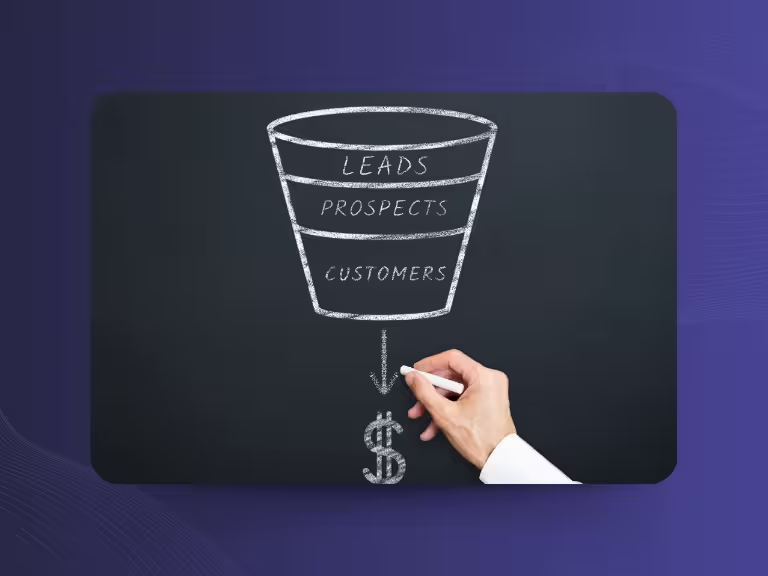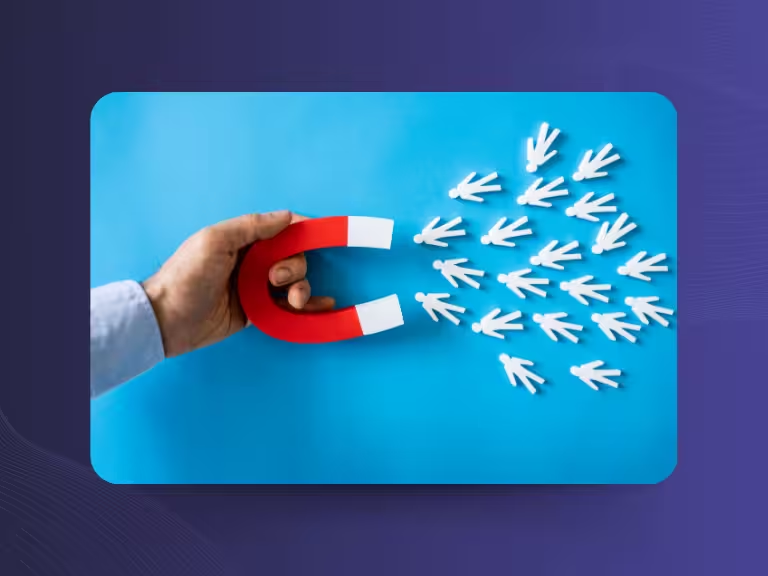Introduction: Why an Effective Sales Funnel is Essential Today
In today's digital business world, the structured development of a sales funnel is no longer a luxury, but an absolute necessity. While potential customers navigate through a flood of information and offers, companies need a clear, systematic approach to turn prospects into loyal customers. Building a sales funnel means strategically thinking through the entire sales process and optimizing every step of the customer journey.
The importance of a functioning sales funnel lies in its ability to deploy sales resources in a targeted manner and sustainably increase conversion rates. Modern funnels go far beyond simple lead generation – they consider personalization, automation, and continuous optimization. In this comprehensive guide, you'll learn everything about the different phases of a sales funnel, practical implementation strategies, modern optimization techniques, and the role of personalization in the sales process.
For teams looking to increase their sales efficiency, structured funnels are the key to success. Modern automation tools, such as Sally for documentation and analysis of sales conversations, help make every step of the funnel trackable and optimizable.
What is a Sales Funnel and Why is it So Important?
Definition of the Sales Funnel
A sales funnel is a systematic process model that maps the journey of potential customers from their first contact with your company to the purchase completion. The term "funnel" illustrates how the number of prospects decreases from stage to stage, while simultaneously increasing the likelihood of purchase. The main goal is to increase conversions and efficiently utilize sales resources.
Unlike traditional sales approaches, a sales funnel focuses on the targeted guidance of prospects through different phases. Each phase has specific goals, content, and measures designed to move prospects to the next stage. This structured approach makes it possible to make sales activities measurable and continuously improve them.
The Importance of a Sales Funnel for Companies
A well-thought-out sales funnel provides companies with a significant competitive advantage through structured customer approach. Instead of hoping for random sales successes, teams can systematically control and optimize their sales process. This leads to better tracking and measurability of sales success, which in turn enables informed decisions for future strategies.
Current market data impressively shows the effectiveness of optimized sales funnels: companies that continuously analyze and adapt their funnels record up to 30% higher conversion rates compared to competitors without structured approaches. Additionally, 80% of buyers report that they prefer personalized content – a clear signal for the necessity of segmented funnel strategies.
Important Terms Related to Sales Funnels
For successful sales funnel building, understanding the core terms is essential. Leads are potential customers who have shown interest in your offer. The conversion rate measures the percentage of leads who perform a desired action. Call-to-actions (CTAs) are concrete action prompts that guide prospects to the next funnel stage. Lead nurturing refers to the systematic cultivation of leads through relevant content and interactions to gradually guide them to purchase completion.

The Phases of a Sales Funnel – From Awareness to Action and Beyond
The Classic Phases
The traditional funnel structure is divided into four main phases. In the awareness phase, the goal is to make potential customers aware of your offer in the first place. Content marketing, SEO, and social media play a central role here. The interest phase focuses on deepening the awakened interest and providing more detailed information. Webinars, e-books, or product demos are typical measures of this phase.
In the decision phase, prospects prepare for their purchase decision. Here, product comparisons, trial versions, or personal consultations are crucial. The action phase finally aims to trigger the actual purchase or desired action. Optimized checkout processes, clear pricing structures, and trust-building elements are of utmost importance here.
Extended Phases in the Funnel
Modern sales funnels also consider the time after purchase completion. The retention phase focuses on customer retention and increasing customer lifetime value. Through targeted onboarding, support, and regular communication, customers are developed into loyal repeat customers. The advocacy phase finally aims to win satisfied customers as ambassadors who bring new prospects into the funnel through recommendations and reviews.
Why Each Phase is Important and What Measures Belong to It
Each funnel phase requires specific measures and content. For the awareness phase, SEO-optimized blog articles, social media content, or podcast appearances are suitable. In the interest phase, detailed landing pages, newsletter subscriptions, or free resources are used. The decision phase benefits from product tests, case studies, or personal consultations, while the action phase is supported by optimized purchase processes and clear CTAs.
Building a Sales Funnel – Step-by-Step Guide for Beginners
Understanding and Segmenting Target Groups
The foundation of every successful sales funnel lies in a deep understanding of your target group. Creating detailed personas enables analyzing specific user needs and developing tailored content. This involves not only demographic data but especially motivations, challenges, and decision-making processes of your potential customers.
Segmenting your target group is essential for personalized funnels. Different customer groups go through the funnel at different speeds and require different approaches. A B2B decision-maker has different needs than a private customer, and funnel content must be adapted accordingly. Tools for target group analysis, such as surveys, interviews, or data analyses, help define precise segments.
Planning the Customer Journey in the Funnel Context
Customer journey mapping forms the basis for strategic funnel building. By identifying and strategically linking all touchpoints, a holistic understanding of customer interactions emerges. This makes it possible to recognize potential weak points and identify optimization potential before the funnel is built.
A well-thought-out customer journey considers both online and offline touchpoints. From the first Google search through social media interactions to personal conversations – every touchpoint must be seamlessly integrated into the funnel. This holistic view ensures a consistent customer experience and higher conversion rates.
Implementation: From Landing Pages to Lead Nurturing
Practical implementation begins with creating convincing landing pages. Successful landing pages have clear, benefit-oriented headlines that immediately convey what value visitors can expect. Convincing CTAs use active language and create urgency without being pushy. The design should be distraction-free and guide the visitor specifically to the desired action.
Various strategies are suitable for lead generation: content marketing through valuable blog articles or e-books, webinars on relevant topics, or targeted social media campaigns. It's important that the provided content offers real value and fits the respective funnel phase. A lead in the awareness phase needs different content than someone in the decision phase.
Effective lead nurturing occurs through systematic email marketing, personalized content, and automated campaigns. This is where tools like Sally come into play, helping to document and analyze customer conversations. Through automatic transcription and summarization of sales conversations, teams can gain important insights and adjust their nurturing strategies accordingly.

Technological Support in Funnel Building
Modern sales funnels are hardly imaginable without technological support. CRM systems like HubSpot or Salesforce form the backbone for lead management and customer data organization. Funnel builders like ClickFunnels or Leadpages enable the creation of professional landing pages and funnels even without technical knowledge.
Automation and tracking tools like Google Analytics and Hotjar provide important data about user behavior and conversion rates. AI-supported optimization through chatbots or customer data platforms enables personalized customer experiences in real-time. The integration of various tools is crucial – only through a connected tech stack can all funnel activities be optimally coordinated.
Optimization and Sustainable Success in the Sales Funnel
Important Metrics and Analysis in the Funnel
For sustainable success in building sales funnels, continuous analysis is crucial. Metrics like conversion rate, bounce rate, and dwell time provide insights into the performance of individual funnel stages. Particularly important is the analysis of conversion rates between phases to identify weak points.
A/B tests are an indispensable tool for performance improvement. Through systematic testing of different headlines, CTAs, or page layouts, even small improvements can lead to significant increases in conversion rates. It's important to always test only one element at a time to draw clear conclusions.
Personalization and Segmentation as Success Factors
The future of the sales funnel lies in personalization. Dynamic content delivery depending on funnel phase and customer segment makes it possible to provide each prospect with exactly the information they need in their current decision-making process. Real-time data analysis for individual customer approach is enabled by modern customer data platforms.
Personalization goes beyond simple addressing by name. Modern funnels consider behavioral data, preferences, and individual progress through the funnel. A returning visitor receives different content than a first-time visitor, and a lead who has already opened several emails is treated differently than an inactive contact.
Social Proof, Community, and Error Prevention in the Funnel
Social proof through testimonials, reviews, and community interaction strengthens trust in every funnel phase. Customer reviews, case studies, or user numbers have a particularly trust-building effect in the decision phase. Community elements like forums or user-generated content can strengthen engagement and provide additional touchpoints.
Typical errors in funnel building are unclear CTAs, lack of mobile optimization, or missing data analysis. Unclear calls-to-action confuse visitors and lower conversion rates. Since over 60% of internet usage is now mobile, responsive design is essential. Missing tracking implementation prevents data-based optimizations.
.avif)
Best Practices and Continuous Improvement
Successful sales funnels require regular reviews and adjustments. Market conditions change, new technologies emerge, and customer preferences evolve. Therefore, funnels should be viewed as dynamic systems that must be continuously optimized.
The integration of customer feedback is essential. Direct feedback from customers, but also indirect signals like abandonment rates or dwell time, provide valuable insights for improvements. The use of privacy-compliant tools like Sally for workflow automation and better documentation of sales processes supports teams in systematically improving their funnels while meeting compliance requirements.
Conclusion: Building a Sales Funnel – How to Succeed in Getting Started and Sustainable Optimization
Sales funnels have become essential for systematic sales success today. They enable companies to structure, measure, and continuously improve their sales processes. With clear phases, targeted planning, and modern technology, conversion rates and revenue can be sustainably increased.
The success factors of modern funnels lie in personalization, strategic customer journey mapping, and the targeted use of social proof. By considering individual customer needs and using data-based insights, funnels are created that not only convert but also create positive customer experiences.
It's particularly important to recognize errors early and continuously optimize. This not only saves time and money but also enables quick responses to market changes. Tools like CRM systems, funnel builders, and automation solutions support the building and management of effective sales funnels.
The key to success lies in the combination of strategic planning, technological support, and continuous optimization. Companies that view their sales funnels as living systems and regularly adapt them will achieve the best results in the long term.
Further Resources and Tool Recommendations
For successful entry into building sales funnels, various free resources and tools are recommended. Checklists for funnel building help ensure no important steps are forgotten. Funnel templates can serve as starting points for your own strategies and significantly accelerate the building process.
When selecting tools, CRM systems, funnel builders, and analytics tools should be carefully evaluated. The integration of different systems is often more crucial than the functionality of individual tools. Supplementary webinars and blog articles on specific aspects of funnel building help continuously deepen knowledge and recognize new trends.

Test Meeting Transcription now!
We'll help you set everything up - just contact us via the form.
Test NowOr: Arrange a Demo Appointment



